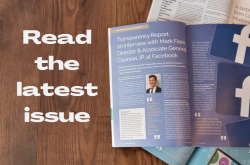In a landmark ruling, the Malaysian Federal Supreme Court in Kuala Lumpur established a significant judicial precedent in IP claims, holding that mere imitation of a trademark does not automatically breach IP rights. Infringement must instead be assessed based on factors such as the degree of resemblance, market context, and whether the trademarks compete in the same sector. This nuanced approach is expected to shape future trademark jurisprudence in Malaysia and beyond.
Background
In a lawsuit filed by Ferrari S.p.A. against Sunrise Mark Sdn Bhd over the WEE POWER energy drink trademark, Ferrari alleged that the logo, featuring two rearing horses forming a “W,” substantially resembled its iconic single rearing horse mark, potentially misleading consumers.
After learning of the registration application in February 2016, Ferrari formally objected to the Malaysian Trademark Registry, citing visual and conceptual similarities. Despite these objections, the Registry approved the mark in April 2024. Ferrari then filed suit to overturn the decision, emphasizing the risk of confusion due to its brand’s reputation and the generic nature of the words “Wee” and “Power.” However, the Malaysian Federal Supreme Court dismissed the claim, holding that the two marks were visually and conceptually distinct—the WEE POWER mark’s dual horses, large “W,” and textual elements created a sufficiently independent character from Ferrari’s emblem.
The Court accepted Sunrise Mark’s argument that “Wee” refers to its founder, not the English word for “small,” and found no intent to imitate Ferrari’s mark. It emphasized the distinct sectors—luxury cars versus energy drinks—minimizing any likelihood of confusion. Judge Adlin Abdul Majid, in her May 30, 2025, ruling, held Ferrari’s objection lacked legal merit and did not meet the threshold for trademark infringement. The Court supported its view with reference to Article 16(1) of TRIPS and the Paris Convention, stressing that protection of well-known marks requires a contextual, multi-factor analysis, not automatic enforcement.
Comparative study
Under Egyptian law––particularly Article 67 of Intellectual Property Law No. 82 of 2002–– trademark registration is prohibited if the proposed mark is identical or confusingly similar to an existing one for the same goods or services, in a way likely to cause public confusion. Egyptian courts focus on the overall impression created in the mind of the average consumer, not partial resemblance, and require a holistic assessment of similarity. Jurisprudence from both the Court of Cassation and the Supreme Administrative Court affirms that protection depends on the general visual and conceptual image of the mark, not isolated elements. Moreover, legal protection is limited to the specific goods for which the trademark is used, even within the same class. The trial court has discretion to determine whether goods are sufficiently similar to cause confusion. Accordingly, trademark rights are only enforceable against competitors operating in the same product category. Egyptian courts also consider the nature of the goods and consumer segments, even within the same class, as key factors in determining confusion.
Applying this to the Ferrari case, the stark difference between Ferrari’s elite clientele and Sunrise Mark’s energy drink consumers makes confusion highly unlikely. The Malaysian Federal Supreme Court’s ruling aligns with international trends favoring market freedom and lawful competition, even against globally famous brands. Similar to the Paris Commercial Court’s 2021 decision in ECC v. Nestlé Nespresso, the Court emphasized that fame cannot justify suppressing legitimate alternatives. The Ferrari ruling reaffirmed that trademark protection hinges on actual consumer confusion—not fame or vague resemblance. It also recognized the legitimacy of local brands using distinctive marks to build consumer trust, provided no real confusion arises. Echoing Egyptian jurisprudence, the ruling supports a balanced, case-by-case analysis that safeguards both established trademarks and fair competition in the market.
Key takeaways
The ruling of the Malaysian High Court presents a balanced and pragmatic approach to trademark comparison, emphasizing assessment of the mark as a whole within its commercial context and consumer base, rather than isolated elements or fame. It highlights the judiciary’s role in protecting trademarks—well-known or otherwise—while safeguarding fair competition and innovation. By aligning with national and international legal standards, the decision supports a consistent and equitable framework for trademark enforcement.

Written by Hamada Farhat
Intellectual Property Lawyer & Legal Advisor, Matouk Bassiouny & Hennawy
Member of the Scientific Association for Intellectual Property
You may also like…
Winter Intellectual Property Conference 2025: a review
As a proud member of the Editorial Board of The Trademark Lawyer, I could not decline the invitation of the...
Jurisdiction in trademark rectification to vest with the High Court, appellate to the Registry
In a recent judgment in the matter of PAS Agro Foods v. KRBL Limited (2025:KER:79840), the Kerala High Court addressed...
Takeaways from J.M. Smucker Company v. Trader Joe’s Company for brand owners regarding trade dress enforcement
Dupes and generic brands, which were once seen as inferior alternatives to name-brand products, have become more...
Contact us to write for out Newsletter














